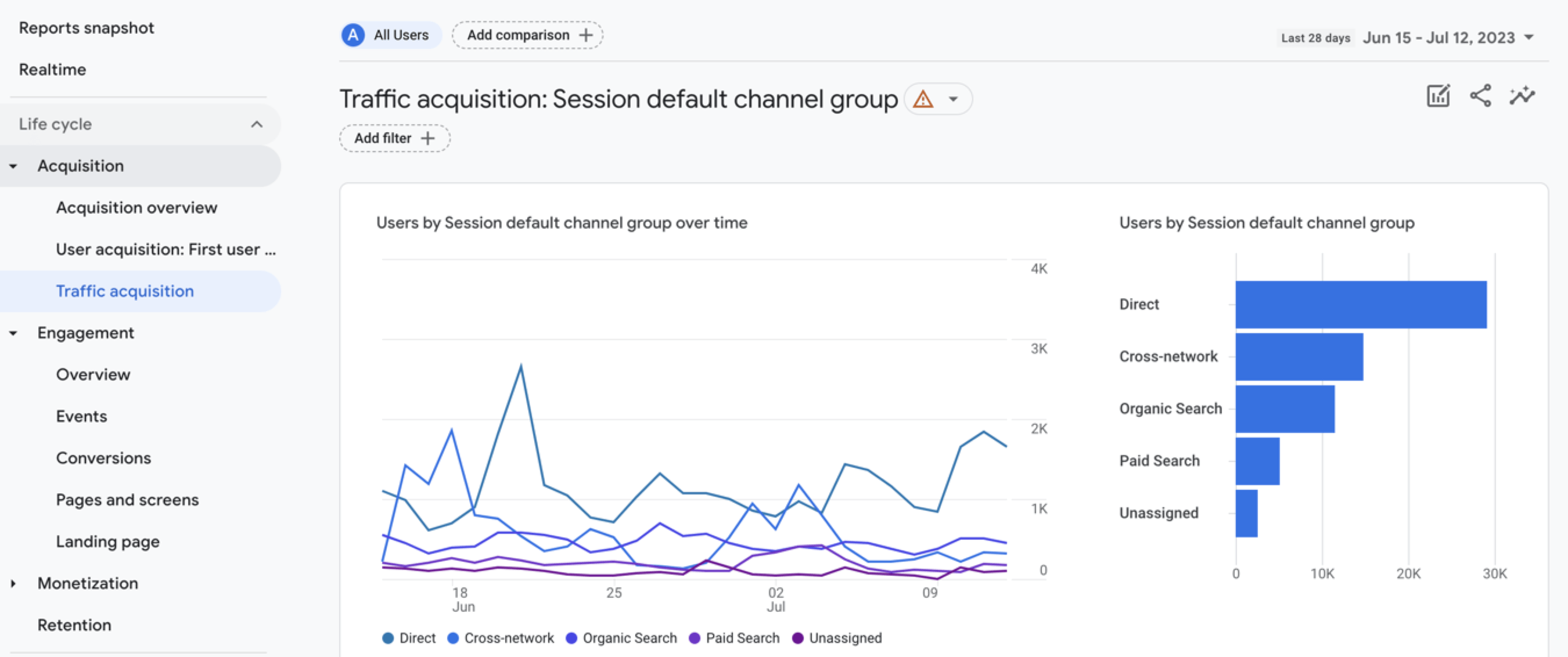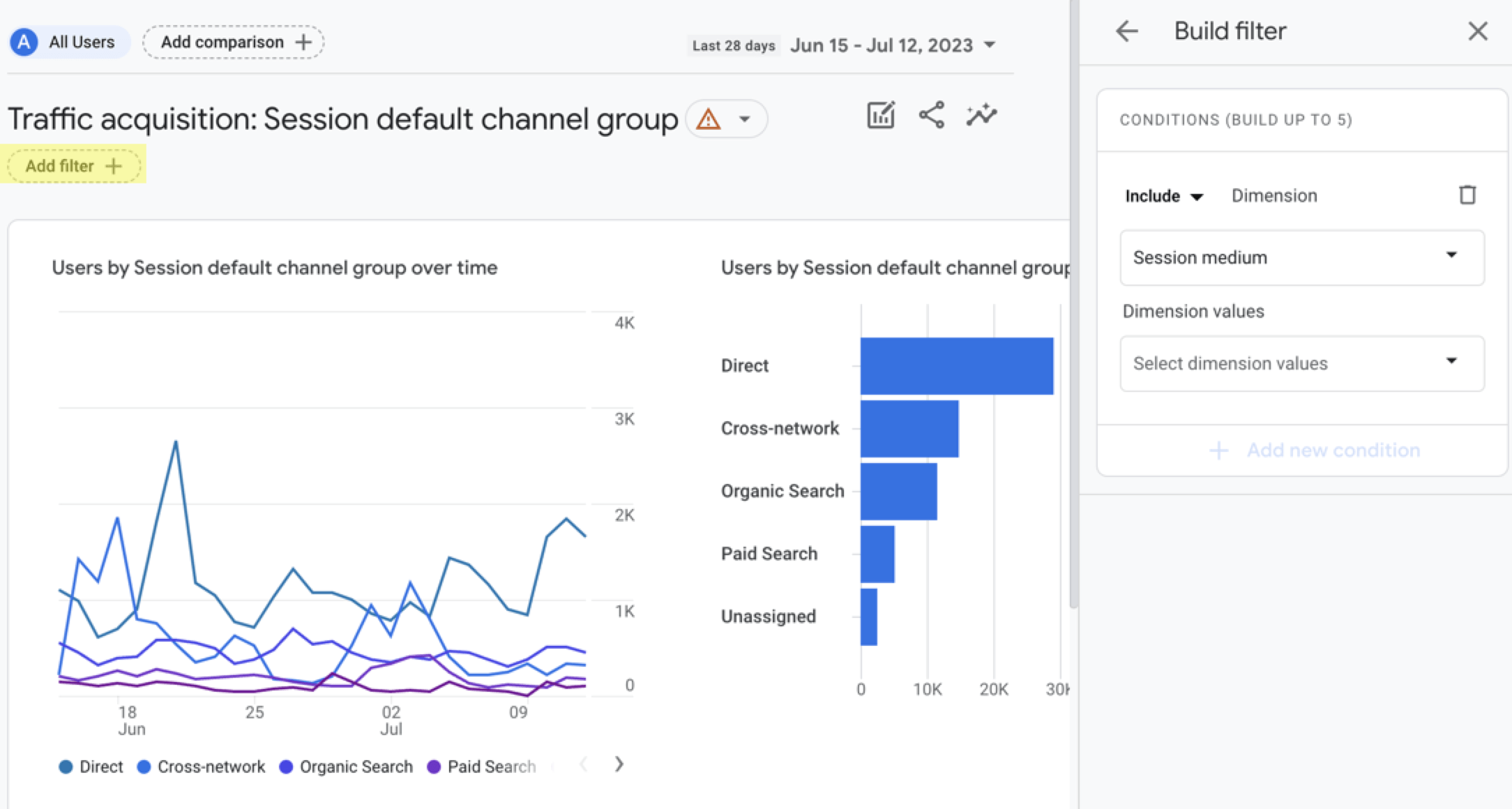Social Media ROI: How To Quantify your Campaign’s Success
If you don’t measure your social media ROI, you cannot know whether your social media marketing is working. Even worse, you have no insight as to what you’re doing right and what you can do to improve.
Fortunately, gauging social media ROI doesn’t have to be complicated. With the right tools and approach, you can get the information you need to effectively use these platforms to reach new customers and grow your business.
We will break down social media ROI in the following sections:
- What is social media ROI
- Why should you measure social media ROI?
- 3 metrics to track for social media ROI
- How to measure social media ROI
- 3 tips to improve your ROI
Read on to learn more, and contact us online to learn how to boost your ROI with WebFX!
Join 200,000 smart marketers and get the month’s hottest marketing news and insights delivered straight to your inbox! “*” indicates required fields (Don’t worry, we’ll never share your information!)Don’t miss our Marketing Manager Insider emails!
Enter your email below:
Inline Subscription Form – CTA 72

What is social media ROI?
Social media ROI is a percentage describing how much you earn compared to what you invest in social media marketing. The higher your ROI, the more revenue you generate from your spending.
Why should you measure social media ROI?
Measuring social media ROI is the only way to know if your efforts are working. Much like any other marketing strategy, having an accurate reporting system is critical to get the most out of your investment.
Here are the primary benefits of calculating social media ROI:
- Calculating reach: One of the biggest advantages of Internet marketing is the wealth of analytics available to businesses. Unlike traditional marketing, which relies on averages to determine reach, you know how many people you reach on social media and how many take steps towards learning about your business.
- Making decisions: You can determine which social platforms are the most successful for your business and which content resonates best with your audience. Then, you can focus on the platforms and content that drive the best possible results over time.
- Optimizing spending: When figuring out the cost of social media, you want to ensure you get the most return for your actions. Seeing what apps, content, and interactions get the most attention can help you cut costs while earning more money.
On top of that, having data and numbers can help you make clear decisions, especially if you need to work with those outside the marketing and social departments.
3 metrics to track for social media ROI
Social media metrics and performance indicators are essential for calculating your ROI. Since it’s hard to nail down a dollar amount, you must consider other options.
One common mistake in social media marketing is focusing on metrics that don’t further business goals. These metrics (including followers and page likes) are often called “vanity metrics” because while they can be nice to show off, they’re not accurate indicators of whether you’re getting more customers.
Instead, you should gauge the ROI of your social media strategy with metrics that will help you reach your business goals. These metrics include reach, site traffic, and conversions.
1. Reach
Every major social media platform allows businesses to see how many users they reach with each post, making it one of the easiest metrics to track.
Although viewing your posts doesn’t necessarily make someone interested in your business, measuring reach can be useful if one of your social media goals is to grow your brand awareness.
You can also use this metric to adjust your content strategy. You can analyze the reach of your posts to determine the best times to post on different platforms, the best formatting for posts, and the best types of content for your audience.
For example, if you notice that Facebook posts made in the afternoon only reach a few hundred users, while ones in the evening reach a thousand, you should alter your posting schedule accordingly.
2. Site traffic
Beyond the built-in analytics for each social platform, you should also use analytics programs like Google Analytics to measure the impact of your social media marketing on your website. One of the most important metrics in these programs is the amount of site traffic each of your accounts generates.
If you’re using GA4, you can check by navigating to Reports > Acquisition > Traffic acquisitions:

From there, you can add filters to outline traffic from different social sites:

This information will help you understand which social platforms drive the most traffic and which site content is most interesting to your followers. Suppose you notice that your infographics, for example, have a much longer session duration than your written content. In that case, you can safely assume that sharing links to visual content is more effective for engaging your audience.
3. Conversions
In addition to attracting new visitors, you also need to know what they do once they arrive at your site. This is where conversion tracking becomes extremely useful.
If you already have events and social sites in GA4, you can navigate to Reports > Acquisition > Traffic Acquisitions. Then, you can sort by network, see who converted from each network, and check how many total conversions you earned. This will be under the “Paid social” report.
That said, many marketers make the mistake of trying to drive sales directly from social media, which is often ineffective. If a visitor is arriving via social media, it may be their first interaction with your site. And in that case, they probably won’t be ready to purchase immediately.
Instead, focus on other conversions like email newsletter signups and contact form submissions. Although these goals don’t lead to immediate revenue, they signal interest in your business and could lead to revenue down the road.
How to calculate social media ROI
Now that we understand what social media ROI is, let’s learn how to calculate it with these three steps:
- Determine how much you spend
- Outline your social media goals
- Calculate your ROI
Let’s look at each one below!
1. Determine how much you spend
Before you can calculate your social media marketing ROI, you must determine what you spend on your campaigns. Your investment is essential for finding out how much you earn in comparison.
When tallying up how much you spend, you should account for:
- Any tools or platforms that you pay for
- Your budget allocated for social media ads
- Content creation (in-house or through an agency)
- Ongoing costs for your social media team
- Any help from agencies or consultants
2. Outline your social media goals
You can’t track your ROI if you don’t know what you’re looking for. Setting specific social media goals can help you nail down numbers and determine your ROI.
Many businesses use social media for the following:
- Purchases (in the app or on a website)
- Downloading content
- Calls
- Email list sign-ups
- Contact form submissions
- Appointments booked
How does your business measure success? What is the first step in your sales funnel that social media can help with? These questions can help you outline what goals might be best to track.
Once you outline your goals, you can track them in a tool like Google Analytics (GA4). This free tool lets you compile all your data in one place for easy reference.
3. Calculate your ROI
Once you have an investment and a dollar amount of earnings, you can calculate your social media marketing ROI. The formula to do so is:
- Social media ROI = (Earnings – Costs) x 100 / Costs
So, let’s say you invest $1000 into an Instagram campaign and earn $5000 in purchases. Your formula would be as follows:
- Social media ROI = (5000 – 1000) x 100 / 1000
Your ROI would be 400%!
We’ve got just the blog post for you.Not happy with your social media engagement?


3 tips for improving your ROI
So, how can you use your ROI and metrics to earn more? You can try some tactics to get the most out of your social media campaigns.
Here are three ways you can boost your ROI:
- Test and adjust your strategies: Running social media tests can help you find out what content users respond to best. You can use A/B testing for social campaigns and see what performs best.
- Evaluate your audience regularly: Knowing your audience will help you create content and choose apps that pertain to them. Look at your demographics and engagement to learn what works for your leads.
- Run a data mining campaign: Data mining can help you learn more about your audience and turn that information into numbers. As you gather data, you will have concrete information about what they are most likely to interact with.
Make their decision easy with a stellar social media presence. See how your brand can level up by requesting a no-obligation proposal today. One of our experts will be in touch within 24 hours!74% of people use social media when making a purchasing decision.

Ready to start measuring your social media ROI?
If you’re not currently measuring the ROI of your social media strategy, it’s time to get started. Accurate reporting can help you better understand how effectively your business is utilizing your accounts, as well as areas that you can improve.
At WebFX, we have years of experience managing successful social campaigns for clients in a variety of industries, and we’d love to do the same for you. If you’d like assistance measuring or improving your social media ROI, please contact us!
Related Resources
- Social Media Analysis: Your Extensive How-To to Improve Social Success
- Social Media Data: What It is and Why You Should Track It
- Social Media Impressions: How to Earn More Attention on Social Media
- Social Media KPIS
- Want More Time? Try One of These 7 Social Media Dashboards
- Which Social Media Metrics Matter and Why You Should Be Measuring Them
- 3 Social Media Metrics You Should Stop Using
- 4 Benefits of Using Instagram Analytics for Marketing
- 8 Best Social Media Analytics Tools to Use in 2024
- A Simple Success Metric for Social Giveaways and Contests
Marketing Tips for Niche Industries
- Social Media Marketing for Doctors: 3 Tips for Success
- Social Media Marketing for Gyms
- Social Media Marketing for Real Estate
- Social Media Marketing for Rehab Centers
- Successful Social Media Marketing for Home Builders
- The Ultimate Guide to Social Media for Equipment Rentals
- Top 3 Benefits of Social Media for Private Investigators
- Top 3 Social Media Platforms for Outdoor Product Companies
- Top 4 Social Media Tips for Swimming Pool Companies
Find Us Driving Revenue Nationwide
- Social Media for San Francisco, CA
- Social Media for Tampa, FL
- Social Media for Toronto, CA
- Social Media for Washington, DC
- Social Media Services for Lancaster, PA
- York, PA Social Media Agency
- Ann Arbor, MI Social Media Agency
- Social Media for Atlanta, GA
- Social Media for Baltimore, MD
- Social Media for Boston, MA









